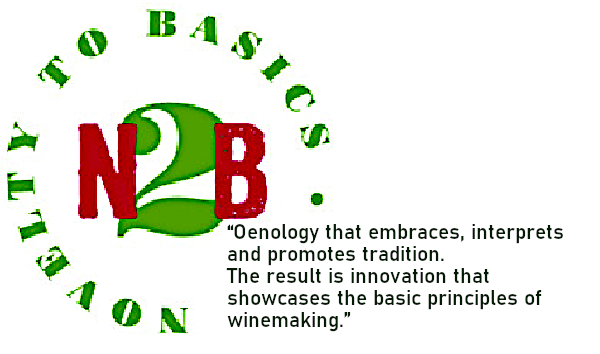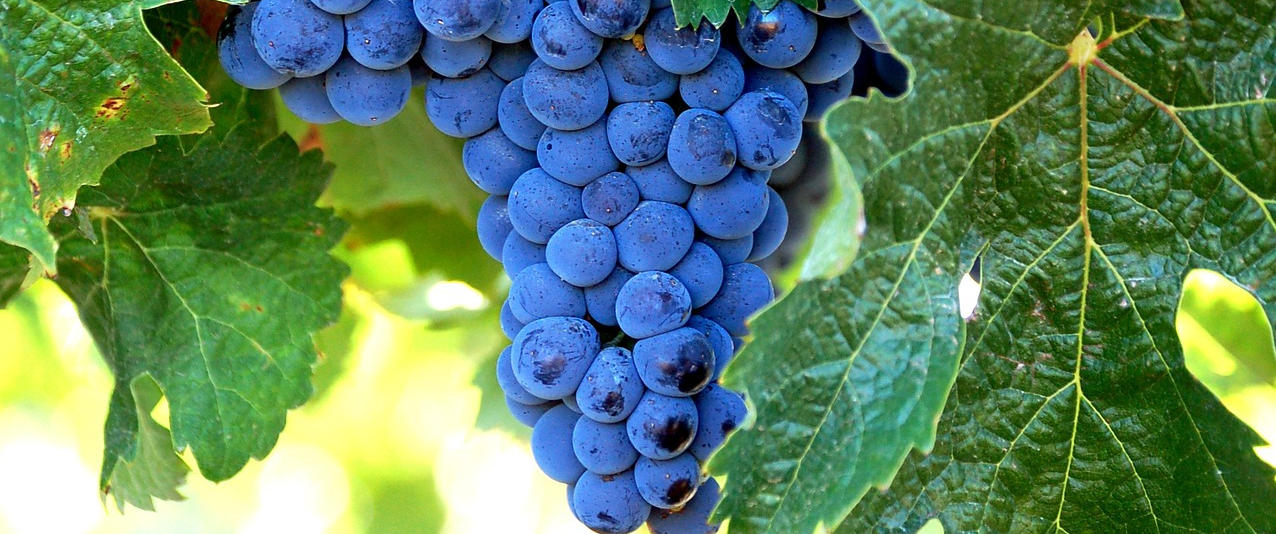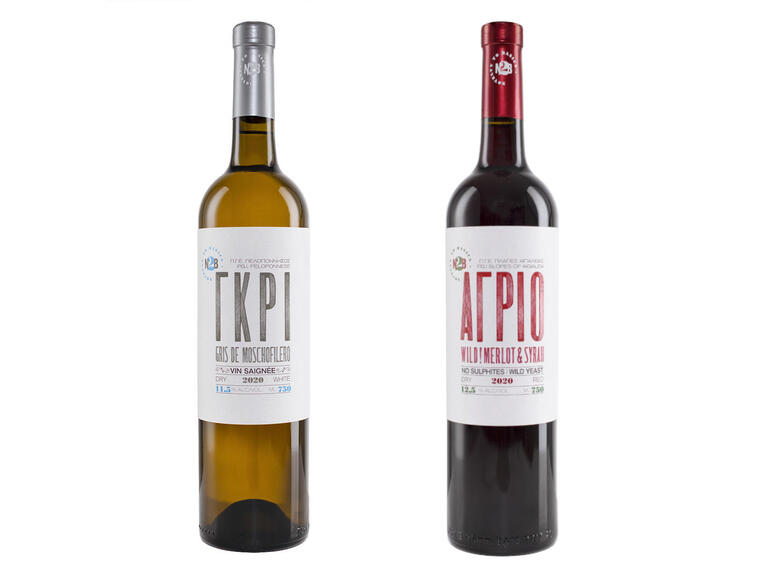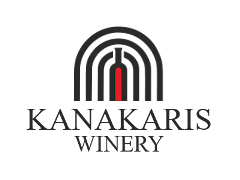Items list
At the beginning of the year, the first stage of the Rebranding of the middle range of our wines was completed. The new concept is a bold plan to create high-quality modern wines, the production of which will be based on traditional winemaking procedures, seen from the modern oenological point of view.
We are talking about Moschofilero and Merlot-Syrah which created the New middle range of wines of our winery.
The change in the core of the existence of this wine category was inevitable. This wine range had to acquire its completely own, self-defining entity and personality. To have something new to say, to bring the different, the innovative.
And so arises the N2B range – Novelty-to-Basics. Which is, Innovation in the basic principles…
Tradition and Innovation
What was the beginning of our thoughts?
Behind every little or big thing, there is always the concept of tradition. But how does the meaning of tradition come about? Was it created by those who study the tradition or by the ones who are being studied by the scientists?
Individuals or groups that follow traditional practices are not required to list the criteria that lead them to define an act of theirs as traditional. But the same cannot be said for those who approach tradition through science. In scientific analysis, traditions must be explained. The techniques, procedures, fundamental values, and assumptions that have always been in use to produce a result cannot be taken as self-explanatory.
To make use of tradition under new perspective and interpretation, filtered through current scientific knowledge, brings us to the concept of modernization/innovation. Our efforts and our actions are defined by this framework for this new range of wines “N2B – Novelty to Basics”.
The post-evolution of our wines
It is widely accepted that traditional winemaking, which is up to our days a practice followed in some isolated rural districts, has as its main feature the prolonged contact of the grape skins (in some cases also of the stems) with the must and the avoidance of sulfites either out of lack of knowledge or insecurity for the use of the chemical substance or out of attachment to a certain notion of traditionality or a combination of all of the above.
The goal was now visible and obvious for us. The new wine range had to rely upon the basic characteristics of traditional winemaking techniques and be framed by all modern oenological development, which will allow us to introduce tasteful and delicious high-quality wines of the 21st century.

AGRIO · WILD! Merlot & Syrah – No SO2 | Wild Yeast
The Greek word for Wild is ‘ΑΓΡΙΟ’ or else ‘AGRIO’ with latin spelling. Right from the beginning of the harvest, our family used this word spontaneously to distinguish the grapes that were chosen for the creation of this wines. Afterward, we also named the tanks after it! Inevitably, we have come to the decision to trust our first instinct and give this name to the wine we have produced.
The quality of the appellation zone “Slopes of Aigialeia” and the special features of this ecosystem, produce wine grapes that could easily be considered organic farming.
Two select mountainous vineyards of Merlot and Syrah from the “Slopes of Aigialeia” have been chosen for this special red wine.
The features that have led to the selection of these two vineyards are the low yield, the completely healthy condition of the wine grapes, the cultivation with the least possible interventions, and the unique expression of the grape varieties that are found in these vineyards.
Absolute attention to detail was paid throughout the winemaking process and no addition of sulfites at any stage. To protect the wine from oxidation, we made use of an inert gas atmosphere through all the stages of winemaking. The antimicrobial protection was achieved by the low temperatures and the quick start of the alcoholic fermentation.
The fermentation was achieved by the use of the vineyards’ native yeasts, initiating a process of fortifying them so that they can very quickly start their fermenting activity.
The use of the native yeasts was decided in an attempt to attribute the quality potential of the vineyards, knowing that many different yeast strains will be activated during the whole process of fermentation. Naturally, right after the end of both the alcoholic and the also spontaneous malolactic fermentation, all of the other stabilizing processes were completed immediately and rapidly, in order for the wine to be bottled as quickly as possible and not come in any contact with oxygen.
The result is a multi-layered aromatic potential that quickly moves from leather aromas to red fruits & flowers and then passes from berry jams to a walk in the wet forest ending in a fine mushroom aroma. Rich and delicious in the mouth with velvet tannins and a long aftertaste.
For the ideal experience, enjoy it at 16°C, with vegetable or light meat in oily red sauces. Also with pasta and big red-fleshed fish.

GKRI · Gris de Moschofilero
Gris is the French word for grey that is used in winemaking to describe a grape’s colour or the vinification method used to produce a wine. The Greek word for Gris is ‘ΓΚΡΙ’ or else with latin spelling ‘GKRI’, which we started using spontaneously during harvest and finally decided to name our wine after it.
The traditional aspect of winemaking with the extended contact of the grape skins with the must came forth as well in this version of the evolved Moschofilero, Gris de Moschofilero.
Moschofilero is a reddish (or else gris) grape variety. It is an aromatic variety with a rich, typical, and clearly recognizable varietal aroma. Its typical vinification which involves the direct pressing and absolute no contact of the grape skins with the juice, by definition removes a significant part of its aromatic potential from the final wine as well as almost all of the aromatic compounds that lie on the grape skins.
Also on the grape skins lies the color of the colored grape varieties. This means that in our attempt to maximize the aromatic expression, we had to accept the fact that the grapes’ color pigments are also found on the grape skins. And we accepted this compromise.
A vineyard of Moschofilero in Mantineia was selected. Under systematic monitoring of the ripening process, it was harvested at the optimal point to receive the best of its aromatic potential. At this point, the grapes have an intense reddish color.
To obtain the maximum from the grape variety’s aroma, the must remain in skin contact at very low temperatures for a few hours. Through this process, the wine has a very rich and intense, typical aroma and – of course – some nuances that make it ‘Gris’, which means not absolutely white wine.
A light metallic bronze color is reflected in the glass, showing yellow-orange nuances. The intense and rich aroma of rose petals, rose water, white chocolate, balsam grass, lemon balm, and white-fleshed fruits. In the mouth, it is well-structured, delicious with pleasant acidity.
For the optimal experience enjoy it at 12°C, ideally with aromatic dishes, exotic cuisine, pasta with pesto, and seafood.





